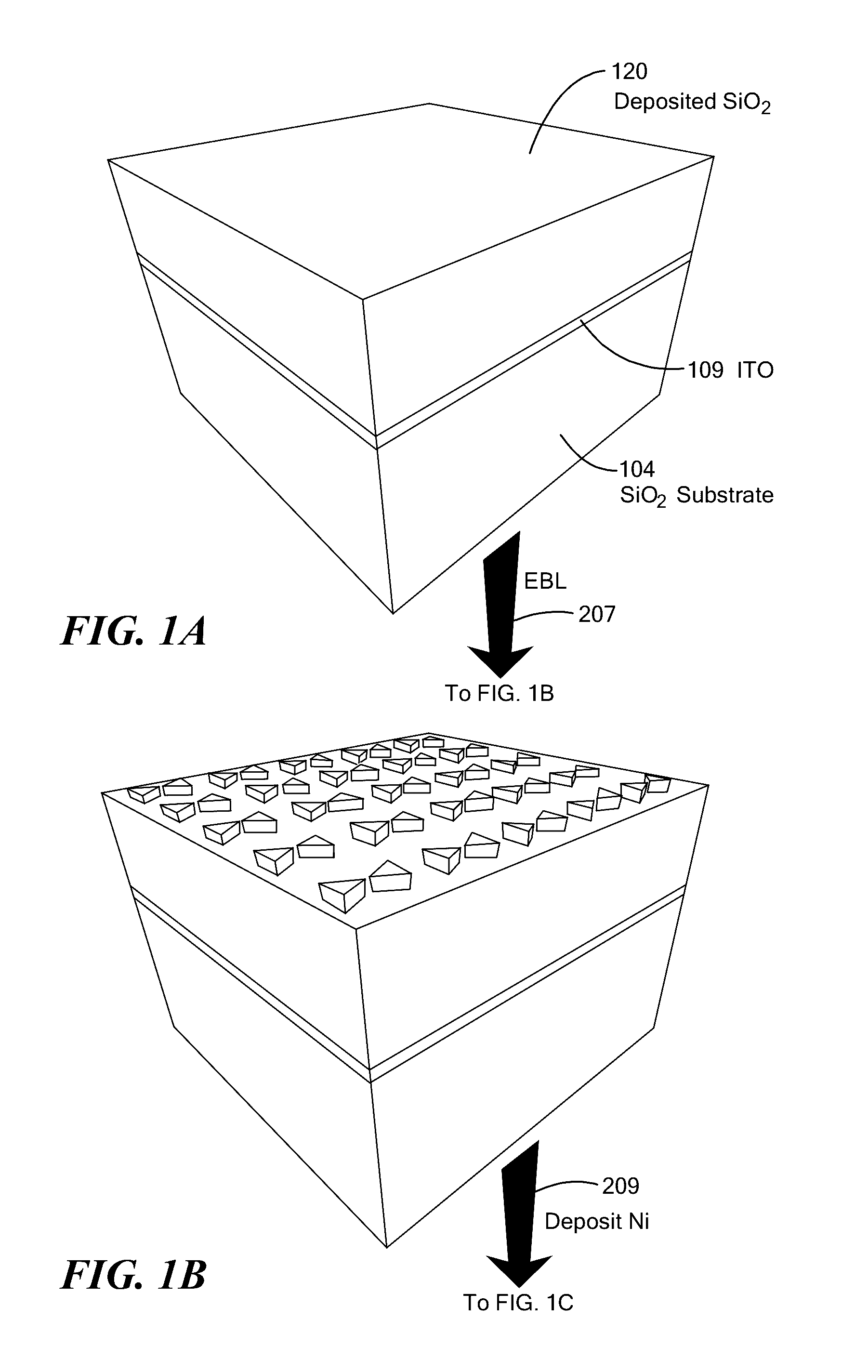Bowtie Nanoantennas and Methods of Using the Same
a nanoantenna and nanotechnology, applied in the field of metal nanoantenna fabrication and use, can solve the problems of limited pillar materials in fabrication techniques to metals or to a semiconductor substrate material, typically silicon, which is not optically transparen
- Summary
- Abstract
- Description
- Claims
- Application Information
AI Technical Summary
Benefits of technology
Problems solved by technology
Method used
Image
Examples
Embodiment Construction
[0011]In accordance with embodiments of the invention, a structure is provided, having a surface and an array of pairs of pillars coupled to the substrate. The pillars are characterized by a thermal conductance less than 0.1 μW / deg, and have a metallic cap atop each pillar, wherein the metallic caps atop at least one neighboring pair of pillars are separated with respect to each other by no more than 50 nm. In an alternate embodiment of the invention, the pillars are substantially transparent in a visible portion of the spectrum and characterized by a ratio of height to thickness exceeding 2.0.
[0012]In accordance with other embodiments of the present invention, the metallic caps may be substantially triangular and the substrate surface may be substantially planar. The pillars may be substantially transparent in a specified portion of the electromagnetic spectrum.
[0013]The substrate and the pillars may be composed of an identical material, and a layer of conducting material may inter...
PUM
| Property | Measurement | Unit |
|---|---|---|
| thickness | aaaaa | aaaaa |
| thickness | aaaaa | aaaaa |
| thickness | aaaaa | aaaaa |
Abstract
Description
Claims
Application Information
 Login to View More
Login to View More - R&D
- Intellectual Property
- Life Sciences
- Materials
- Tech Scout
- Unparalleled Data Quality
- Higher Quality Content
- 60% Fewer Hallucinations
Browse by: Latest US Patents, China's latest patents, Technical Efficacy Thesaurus, Application Domain, Technology Topic, Popular Technical Reports.
© 2025 PatSnap. All rights reserved.Legal|Privacy policy|Modern Slavery Act Transparency Statement|Sitemap|About US| Contact US: help@patsnap.com



